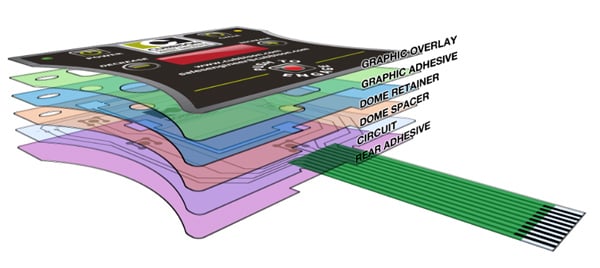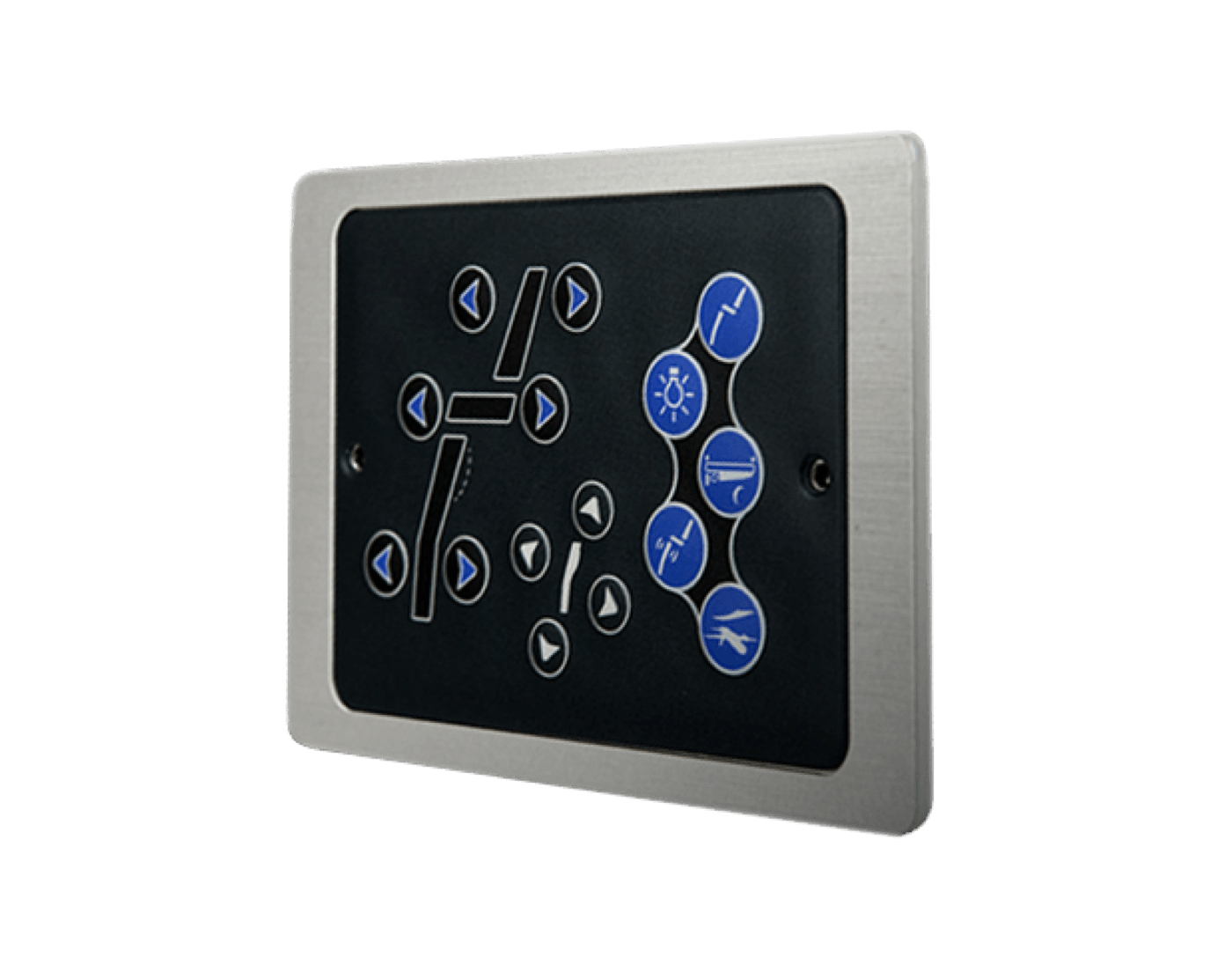The Influence of Membrane Switches on the Development of Smart Wearables
Membrane Switch Modern Technology: The Key to Trusted and Cost-Effective Interfaces
Membrane layer switch innovation has emerged as a critical part in the design of customer interfaces, supplying both dependability and cost-effectiveness across a diverse array of applications. As we explore the multifaceted benefits of membrane switches, their potential for innovation elevates questions regarding future applications and advancing trends.
Recognizing Membrane Layer Change Technology
Membrane switch innovation is an extensively made use of user interface solution in various digital devices, using a smooth blend of functionality and layout. This innovation includes multiple layers of materials, usually including a visuals overlay, spacer layer, and a circuit layer. The visuals overlay presents the interface aspects, while the spacer layer divides the circuit layer from the overlay up until a user triggers a switch.
When stress is related to the overlay, the circuit layer finishes the electrical circuit, sending a signal to the device. This mechanism permits different arrangements, including responsive feedback and backlighting choices, boosting individual communication. Membrane layer switches are commonly manufactured using resilient products such as polyester or polycarbonate, making certain longevity and resistance to ecological aspects like dampness and dirt.
The versatility of membrane layer switches enables their application in diverse industries, consisting of clinical tools, customer electronic devices, and commercial controls. Their compact design enables combination right into space-constrained environments, providing an efficient interface without compromising aesthetic appeal. Comprehending the ins and outs of membrane layer button innovation is necessary for suppliers and developers looking for to produce reputable and reliable human-machine user interfaces.
Trick Benefits of Membrane Layer Buttons
While numerous user interface remedies exist, membrane layer switches deal distinct benefits that make them a preferred option in countless applications. One of the primary advantages is their durability; membrane layer switches are made to stand up to severe ecological problems, including dampness, dirt, and temperature level fluctuations, guaranteeing long-lasting efficiency. This resilience substantially lowers the demand for regular replacements, therefore lowering general upkeep expenses.

In addition, membrane layer switches are light-weight and compact, making them appropriate for applications where room is restricted. Their low-profile style adds to a sleek appearance without endangering capability.
Cost-effectiveness is likewise a notable benefit, as the production procedure for membrane switches over has a tendency to be more economical contrasted to standard mechanical buttons. This affordability, incorporated with their reliability and convenience of installation, placements membrane layer switches as a sensible remedy for a large variety of sectors seeking effective and efficient user interfaces.
Applications Across Different Industries
Exactly how do membrane layer buttons adjust to the diverse needs of numerous sectors? Membrane switch innovation is progressively identified for its flexibility, making it ideal for a vast array of applications across multiple industries.
In consumer electronic devices, membrane layer switches provide a small remedy for push-button controls and home devices, improving user experience through instinctive design. Furthermore, the commercial sector leverages membrane switches for machinery control panels, taking advantage of their resistance to harsh environments, such as wetness and dust.
Army and aerospace applications likewise make use of membrane switches for their reliability and capability to endure extreme conditions, guaranteeing operational efficiency in vital situations. Furthermore, the food and drink market embraces these switches for automated systems, where hygiene and ease of operation are extremely important. Eventually, membrane layer switches are customized to satisfy the one-of-a-kind needs of Read Full Report each market, proving their important role in modern-day innovation interfaces
Style and Customization Choices

In the world of membrane layer button technology, design and customization choices play a critical role in improving functionality and user communication. These switches can be customized to fulfill specific operational needs and aesthetic choices, making them versatile parts in various applications.
Among the primary modification alternatives is the format of the switch itself, which can be created to fit special individual interfaces and ergonomic considerations. By changing the shape, dimension, and plan of switches, manufacturers can produce user-friendly layouts that promote convenience of usage. Furthermore, the consolidation of different colors and visuals overlays permits for branding and enhanced presence, making sure that users can rapidly determine features.
Moreover, membrane switches can be engineered with different responsive comments systems, such as elevated switches or distinct clicks, to improve the individual experience. Various materials can also be chosen for sturdiness and ecological resistance, attending to elements such as wetness, temperature variations, and chemical exposure.
Inevitably, the considerable layout and modification options offered in membrane switch innovation encourage organizations to produce customized solutions that not only meet practical my latest blog post requirements but additionally line up with their branding and operational needs.

Future Fads in Membrane Buttons
As membrane layer button innovation proceeds to advance, future patterns are progressively concentrated on enhancing user experience and incorporating advanced functionalities. One significant pattern is the assimilation of touch-sensitive and capacitive modern technologies into typical membrane switches. This growth permits more user-friendly interface, giving responsive feedback while maintaining a sleek style.
Another arising trend is using environmentally pleasant materials, driven by the growing need for lasting production techniques. Manufacturers are looking for to lower their carbon impact by using recyclable substratums and low-impact inks, aligning with worldwide sustainability goals.
Moreover, the increase of the Web of Points (IoT) is triggering the incorporation of clever attributes right into membrane layer buttons. Boosted connection choices will certainly enable gadgets to communicate with each other, permitting seamless assimilation right into wider systems.
Furthermore, innovations in printing modern technologies, such as digital printing, are allowing for better design adaptability and modification. This allows producers to generate detailed styles and lively shades cost-effectively.

Verdict
Finally, membrane switch modern technology stands for a vital advancement in user interface layout, offering considerable advantages in durability, personalization, and cost-effectiveness. Its widespread applicability throughout redirected here varied sectors emphasizes its importance in modern-day innovation. As innovations proceed to arise, specifically in touch-sensitive interfaces and sustainable materials, the possibility for membrane layer switches over to improve user experience and performance continues to be encouraging. Proceeded expedition of this innovation will likely generate additionally renovations and broaden its scope in future applications.